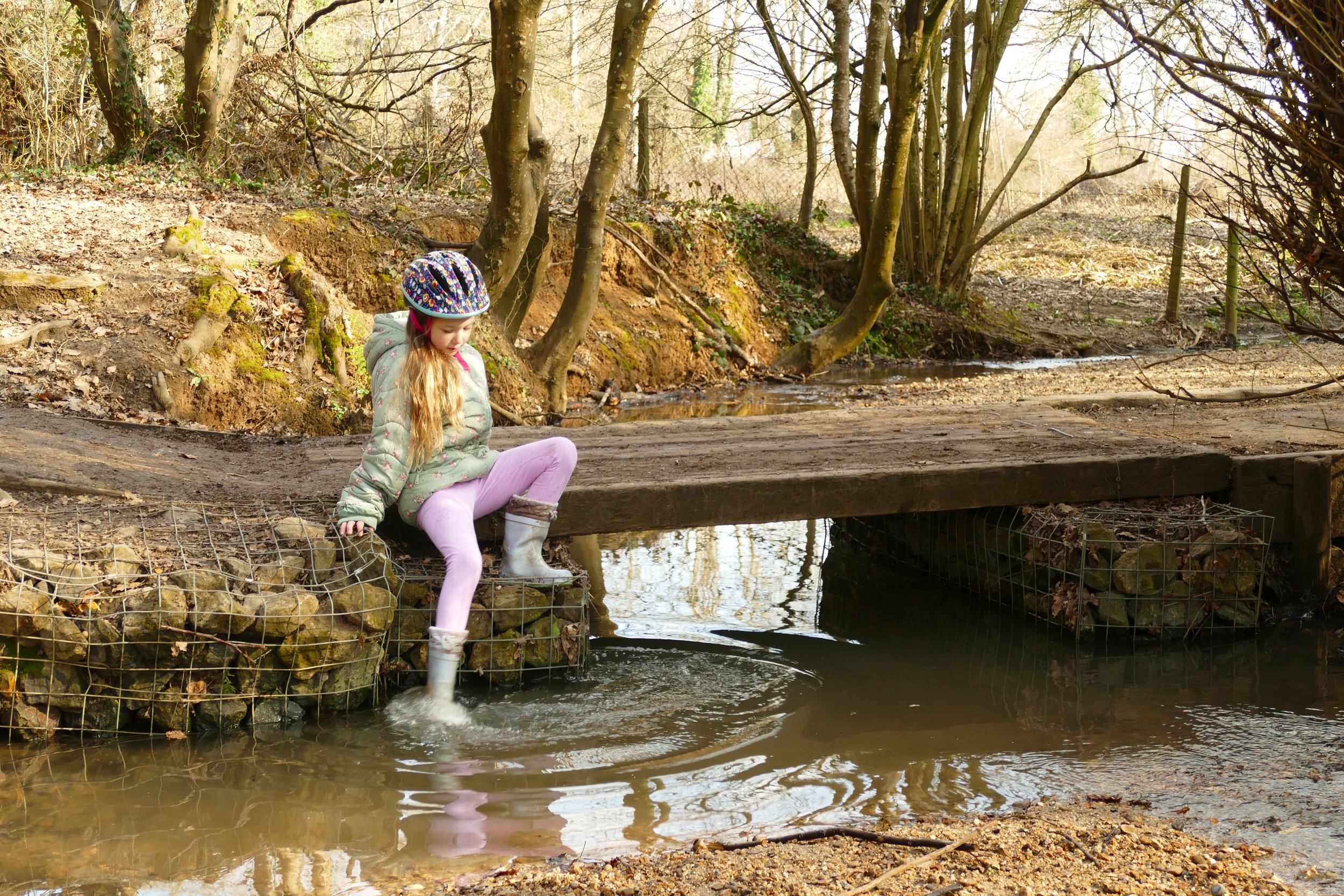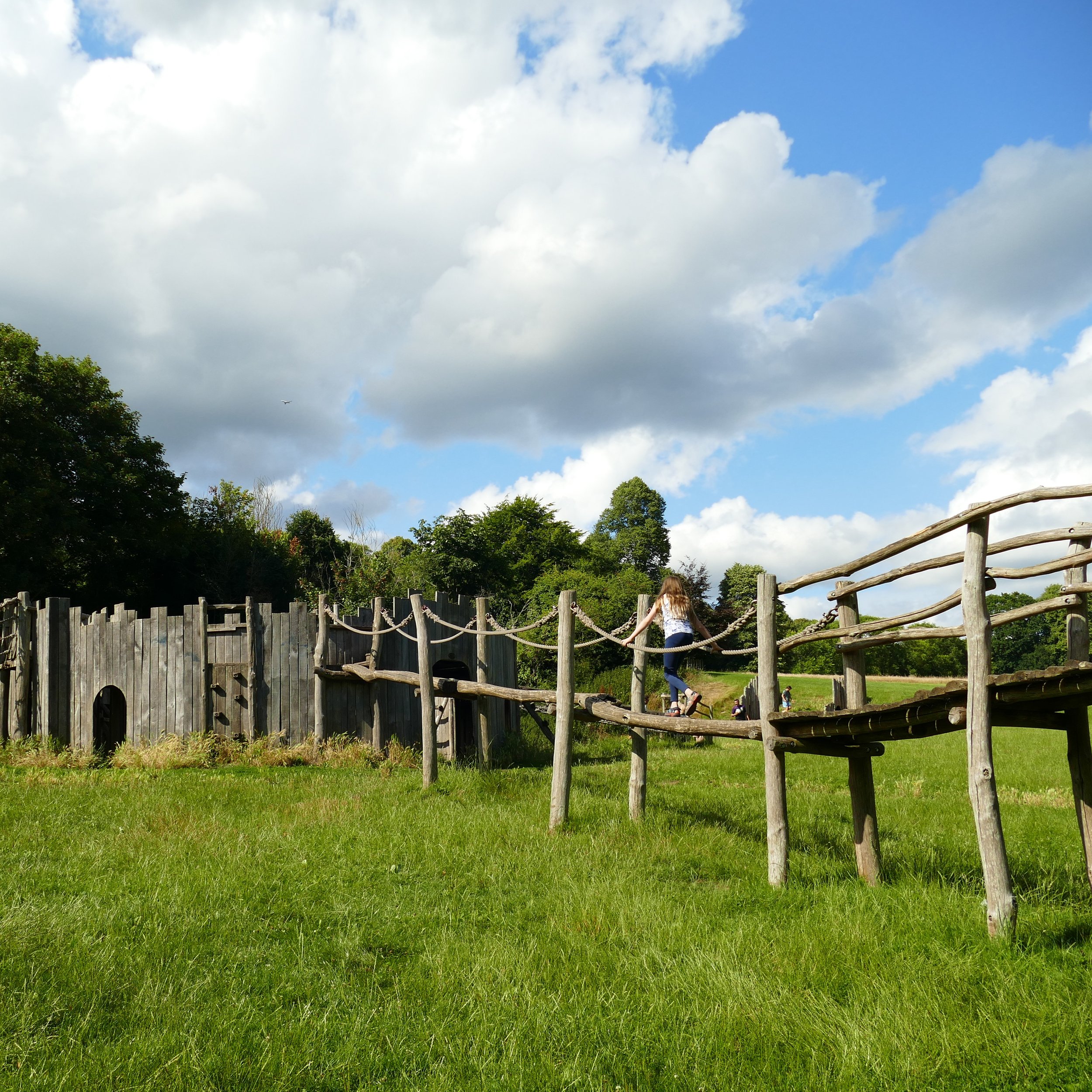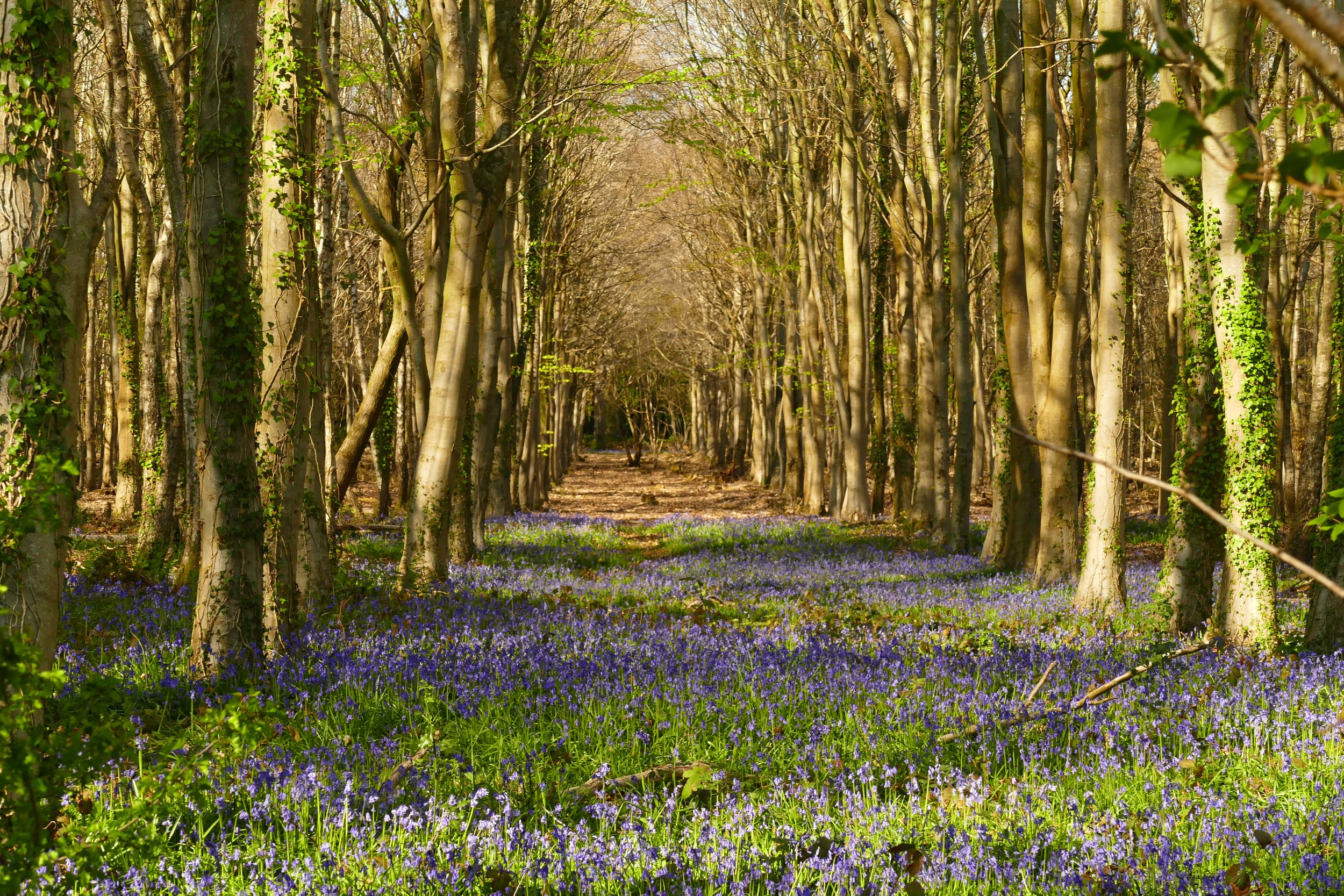Farnham Park
Children will enjoy the innovative adventure play area, the scooter and bike friendly paths and the castle on this walk.
The amazing adventure play area at Farnham Park
The Basics
Time: 1 hour 10 mins
Distance: 4.2 km / 2.6 miles
Terrain: Paved paths on our chosen route, a couple of steady hills.
Pushchair: The paths are pushchair friendly.
Dogs: Dogs should be on leads around the play area and won’t be allowed into the castle keep (unless assistance).
Refreshments: There is a café at the golf club which is open to the general public or Farnham town centre is a couple of minutes walk away and has an extensive range of cafes and restaurants.
Toilets: There are toilets at the golf club café.
Public Transport: It is about a ten minute walk from Farnham train station to the entrance to the park.
Parking: Free car park off Folly Hill by the ranger’s office (Postcode: GU9 0AU - W3W: ///bathtubs.playback.spoil). There is additional parking further along Folly Hill if this is full, or you can park in the pay and display car parks in town and walk up.
You will find a fun stream to play in on a walk around the park
Farnham park isn’t an ordinary park. Despite being a moments walk from the town centre, you have have a real feeling of being in the countryside as you walk around this 600 year old deer park. Find streams, ponds, woodland, grassland, tree-lined avenues, adventure play and even a free-to-enter castle keep.
The Route
Farnham Park covers 320 acres and is crisscrossed with a variety of paths. Some areas have short grass and appear like a typical town park and others are wilder with rough grass, wooded areas, grazed land and ponds. You could easily find your own route depending on your taste. We chose a circular walk that is paved in almost its entirety and cuts through a variety of the different landscapes on offer. If you follow the loop in a clockwise direction from the car park, you will save the castle and adventure playground until the end. We give this advice because on our first attempt at this walk, we didn’t actually make it further than the play area and we ended up spending the whole afternoon there instead!
Head into the park from the car park and walk with the golf club to your left and the football pitches to your right. Soon, you will see a paved path and a gap in the hedge to your left, after the cafe and just after the brick changing block. Go through the gap and follow the paved path.
The path will cut across the middle of the whole park, crossing streams and passing woodland, ponds and grassland.
As you approach the houses lining the far edge of the park, follow the paved path to the right. Stay on the paved path with houses to your left and the park to your right. You will eventually come to a crossing over Nadder Stream which makes a great place for a play.
Continue after the stream, passing the grazing area to your right. When you come to the avenue of trees, keep going straight if you are interested in visiting the play areas. When you reach the corner of the park, turn right and follow the path with houses on your left.
Along this section of the path you will first come to a more typical play area with a slide and play equipment well suited to smaller children. Continue along the path for the adventure play area. This is made up of a series of imaginatively carved wooden structures including bridges, tunnels and a castle. It even has a trim trail suitable for adults.
From this point you can turn right up the hill to return to the car park or turn left and head out of the park into the attractive town centre. You can also visit the castle, which overlooks the park. You can do this by walking past the cricket club next to the car park, turning left at the park entrance and following the path beside the road. Farnham Castle is a private venue, but the original keep is managed by English Heritage and is free to enter. You will need to enter the castle forecourt entrance and look out for English Heritage signs to the keep.
As a member, you gain instant access to all 120 PDF files in our PDF library. You also get a digital membership card that allows you to benefit from special members-only discounts at some of our favourite pit-stops on the walks.
Did you know?
Farnham Park is a medieval deer park that once was the hunting ground of the nobility residing in the adjacent castle. It has a boundary that has remained unchanged for over 600 years.
If you enjoyed this walk…
…try this on at Hogmoor Inclosure, which also has an amazing play area
We are passionate about keeping The Ambling Path as a free resource available to everyone, forever. If you have enjoyed using our walking guides, then please consider leaving us a donation. This will help to cover our costs as well as rewarding the considerable time and effort needed to maintain the site. Thank you.








































